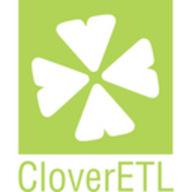

Pentaho Data Integration and Analytics and CloverETL are competing in data integration and analytics. Pentaho has the upper hand in data processing capabilities, while CloverETL is known for scalability and efficient workflows.
Features: Pentaho Data Integration and Analytics is renowned for its comprehensive data integration tools, strong data transformation capabilities, and an extensive set of plugins. CloverETL is noted for advanced data transformation functionalities, robust performance in handling large data volumes, and superior scalability for large-scale data operations.
Ease of Deployment and Customer Service: Pentaho Data Integration offers a straightforward deployment process with considerable support documentation and community interaction. CloverETL provides a modular deployment structure with robust technical support, often requiring less initial configuration, allowing faster implementation.
Pricing and ROI: Pentaho's pricing structure is associated with a lower initial investment, delivering strong ROI through its wide range of features and supportive community. CloverETL, although requiring a higher initial setup cost, offers efficient resource allocation and outstanding scalability, resulting in significant long-term ROI.
| Product | Market Share (%) |
|---|---|
| Pentaho Data Integration and Analytics | 1.7% |
| CloverETL | 0.5% |
| Other | 97.8% |

| Company Size | Count |
|---|---|
| Small Business | 17 |
| Midsize Enterprise | 16 |
| Large Enterprise | 25 |
Pentaho Data Integration stands as a versatile platform designed to cater to the data integration and analytics needs of organizations, regardless of their size. This powerful solution is the go-to choice for businesses seeking to seamlessly integrate data from diverse sources, including databases, files, and applications. Pentaho Data Integration facilitates the essential tasks of cleaning and transforming data, ensuring it's primed for meaningful analysis. With a wide array of tools for data mining, machine learning, and statistical analysis, Pentaho Data Integration empowers organizations to glean valuable insights from their data. What sets Pentaho Data Integration apart is its maturity and a vibrant community of users and developers, making it a reliable and cost-effective option. Pentaho Data Integration offers a range of features, including a comprehensive ETL toolkit, data cleaning and transformation capabilities, robust data analysis tools, and seamless deployment options for data integration and analytics solutions, making it a go-to solution for organizations seeking to harness the power of their data.
We monitor all Data Integration reviews to prevent fraudulent reviews and keep review quality high. We do not post reviews by company employees or direct competitors. We validate each review for authenticity via cross-reference with LinkedIn, and personal follow-up with the reviewer when necessary.